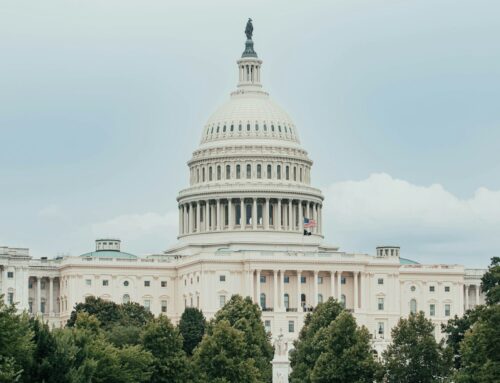The 429-page “Tax Cuts and Jobs Act” (amended bill released November 3, 2017) makes major changes to both the corporate and individual tax codes that if enacted would impacts across the economy.
But, like the vast majority of lawmakers and the public today is the first we are seeing the bill language. This is because the bill was developed by a Republican leadership with the White House – and no participation from rank and file Republicans, let alone Democrats. The stated goal is get a final bill to the president’s desk for signature before Christmas. Massive changes to the tax code are too important to rush through using a parliamentary procure that leaves so many out of the process. Any major tax change should be considered under regular order.
Substantively, we will be poring over the details in the coming days, but we know one thing off the bat: while the bill has numerous offsets, it is still likely to increase the deficit by at least $1.5 trillion over the next 10 years and quite possibly much more. This is fiscally irresponsible, and if enacted would have enormous impact across the economy. Tax policy has to be about trade-offs, not giveaways. If Congress wants to lower rates and simplify the structure of the code, it needs to make the hard choices to figure out how to pay for it.
At first glance, there are some good ideas and some bad ideas in the bill. We have long advocated for reducing the top limit to the mortgage interest deduction to $500,000. But the bill also includes doubling the exemption for estate taxes from $5 million to $10 million and then phasing it out altogether in six years, a provision that would benefit a tiny number of very wealthy families. Many of the tax expenditures – tax breaks – that litter the code are repealed, but others remain. And some are needlessly extended, even expanded when they should be left to expire, like the nuclear production tax credit.
Comprehensive tax reform is a critical issue. Taxpayers for Common Sense is ready to work with Congress to achieve it. But the lesson from the last tax reform more 30 years ago is clear. It takes years of drafts and hearings, shared sacrifice and bipartisan engagement. And we cannot afford to pile more than $1 trillion onto an already staggering $20 trillion national debt.
We’re going through the documents, and will post updates here as we find important pieces that affect taxpayers.
November 3, 2017
- 4:30pm – Nuclear Tax Credit Expanded and Extended
- 1:30 pm – Joint Committee on Taxation Score
- 11:00 am –Increased Standard Deduction and Elimination of Personal Exemptions
- 11:00 am –Increased Credits for Certain Dependents for Certain Times
November 2, 2017
- 5:00 pm – Section 199 Deep Sixed
- 2:00 pm – Tax Rate Changes
- 2:00 pm – The Home Mortgage Interest Deduction
November 3, 2017 4:30 pm
Nuclear Tax Credit Expanded and Extended
In Section 3506, the tax bill expands and extends the credit for production of electricity from “advanced” nuclear power facilities. The credit allows qualifying nuclear power plants to earn 1.8 cents for every kilowatt hours of electricity it produces and sells to an unaffiliated buyer in its first eight years of operation. When the nuclear production tax credit (PTC) was first passed in the Energy Policy Act of 2005, the goal was to promote the construction of “advanced”* nuclear power plants in the near-term. Accordingly, the provision as enacted only allows plants to claim the credit if they come online before 2021.
The so-called “nuclear renaissance” never materialized and by the start of this year only two nuclear projects were under way with an expected completion date before the 2021 deadline.
After the lead contractor for both, Westinghouse Electric Co., filed for bankruptcy in March, owners of one of the projects at the V.C. Summer Plant in South Carolina announced they were abandoning construction. The owners of the other project at Plant Vogtle in Georgia have since reported their two reactors are roughly $12 billion over budget and at least five years behind schedule. As a result, it’s now clear that no facility will qualify for the PTC as enacted.
But here comes the bailout brigade! Thanks to powerful lobbying from the Georgia and South Carolina delegations, and their industry allies, the House passed H.R. 1551 in June to expand and extend the PTC. The Senate hasn’t take up the measure, but Section 3506 in the tax bill is a word-for-word copy of H.R. 1551. If at first you don’t succeed…
The proposed provision makes two changes to the PTC. First, it eliminates the 2021 deadline. Thus, what was an incentive [read: subsidy] for near-term economic activity would become a blank check to any nuclear plant that is ever constructed in the future. Second, it allows entities that don’t pay federal taxes to claim the tax credit, and then transfer it to taxable project partners. Wouldn’t you know it, three owners of Plant Vogtle fit in that category, and would be able to transfer the credit to another project partner, say the construction manager – Southern Nuclear – or the fourth plant owner – Georgia Power – which are both owned by Southern Company.
The JCT scores the PTC modifications as costing $0.4 billion over the next 10 years. That seems unlikely. If Vogtle comes online in 2022 and 2023 as currently expected, its owners could potentially claim $278 million in the credit every year, all of which could funnel to Southern Company, which could end up pocketing more than $2 billion from the credit. Regardless, if the credit becomes immortal, taxpayers will eventually have to subsidize the nuclear industry to the tune of $6 billion, in or out of the budget window.
*”Advanced” is in quotes because it was defined to mean any facility with a design approved by the Nuclear Regulatory Commission after 1993. So, really, the PTC was a blanket giveaway to any new nuclear plant.
November 3, 2017 1:30 pm
Joint Committee on Taxation Score
The Joint Committee on Taxation is Congress’s nonpartisan revenue scorekeeper. They will determine whether legislation meets the reconciliation instructions (in this case increase the deficit by no more than $1.5 trillion over ten years). The verdict is in and it’s a squeaker – 1.4871 trillion increase in the deficit over the 2018-2027 period. And you can tell there are some gimmicks to reduce cost in the back end by either sunsetting some provisions or including revenue raisers in the latter years because the deficit increase over the first five years (2018-2022) deficit is $921.1 billion, while the second five year (2023-2027) deficit is $560 billion.
November 3, 2017 11:00 am
Increased Standard Deduction and Elimination of Personal Exemptions
As part of a push for simplification, the bill makes major changes to two of the biggest ways a taxpayer reduces their taxable income: deductions and personal exemptions.
Under current law a taxpayer chooses to reduce their taxable income either by itemizing (totaling things like interest on a home mortgage, state and local income taxes, certain health expenditures) or taking a standard deduction based on their filing status. Starting in 2018, the bill basically doubles the available standard deduction and ties annual increases to inflation (CPI).
| Filing Status | Current Law | House Bill |
|---|---|---|
| Single | $6,350 | $12,000 |
| Married Filing Separately | $6,350 | $12,000 |
| Head of Household | $9,350 | $18,000 |
| Married Filing Jointly | $12,700 | $24,000 |
| Qualifying Widow(er) | $12,700 | $24,000 |
JCT estimates the number of taxpayers choosing to itemize deductions will drop from approximately 1/3 to less than 10 percent. This change will reduce revenue by $921.4 billion.
In addition to a standard or itemized deduction, most taxpayers can claim a $4,050 for themselves, their spouse, and any dependents (typically children). The bill accounts for higher standard deductions by eliminating personal exemptions.
Increased Credits for Certain Dependents for Certain Times
Taxpayers with children may be able to get much higher child tax credit.
Under current law a taxpayer can claim a tax credit worth up to $1,000 for each child they have and care for that is under the age of 17. The tax credit begins phasing out for individuals with adjusted gross incomes exceeding $75,000 and joint filers with AGI exceeding $110,000. If the tax credit actually exceeds the taxpayer’s tax liability it can be refundable tax credit.
The House bill increases the child tax credit to $1,600, the phase-out thresholds would increase to $230,000 for joint filers and $115,000 for single filers.
In addition the bill creates a $300 credit for non-child dependents and a family flexibility credit of $300 for the adult taxpayer ($600 joint filing). These $300 provisions would be in effect only tax years 2018 to 2022. Having this available for only five years appears to be a gimmick to make the provision appear less costly because there is no reason (if it is good policy) to end it after five years.
Unlike personal exemptions and the standard/itemized deductions which reduce the amount of income that is taxable, the child tax credit reduces the actual tax burden. Swapping tax deductions for enhanced tax credits could result in significant savings for people with dependents.
JCT estimates these provisions will reduce revenues by $640 billion.
November 2, 2017 5:00 pm
Section 199 Deep Sixed
The domestic production deduction was created a decade ago, when Congress had to eliminate the Foreign Sales Corporation/Extraterritorial Income provision because it violated trade agreements. It benefits companies whose products are “manufactured, produced, or extracted in whole or in significant part in the United States.” The deduction is 9 percent (6 percent for oil & gas companies); it is subject to a limit of 50% of the wages paid that are allocable to domestic production during the taxable year. JCT estimates eliminating this provision increases revenues by $95.2 billion over ten years.
November 2, 2017 2:00 pm
Tax Rate Changes
The legislation will maintain the top individual tax rate of 39.6 percent, with three brackets below of 12, 25, and 35 percent (current rates are 10, 15, 25, 28, 33, 35, and 39.6 percent). The corporate rate would drop 20 percent from the current 35 percent. The estate tax exemption will be doubled and the tax itself will be phased out after six years. (Hear that rich people? Timing is everything, including in death.)
The Home Mortgage Interest Deduction
The home mortgage interest deduction has been trimmed from deductibility on a $1,000,000 mortgage down to $500,000. While the National Association of Realtors are already running ads against this provision, the reality is that the vast majority of Americans will be unaffected by this provision. To avoid gaming the system, it would take effect today. The provision only applies to new purchases (refinancing existing mortgages are exempt) and only for primary residence. Taxpayers has long advocated for reform to this regressive provision, to put the impact into perspective in the last year the highest monthly median home sale price was $327,000 and the highest average was $382,000.










